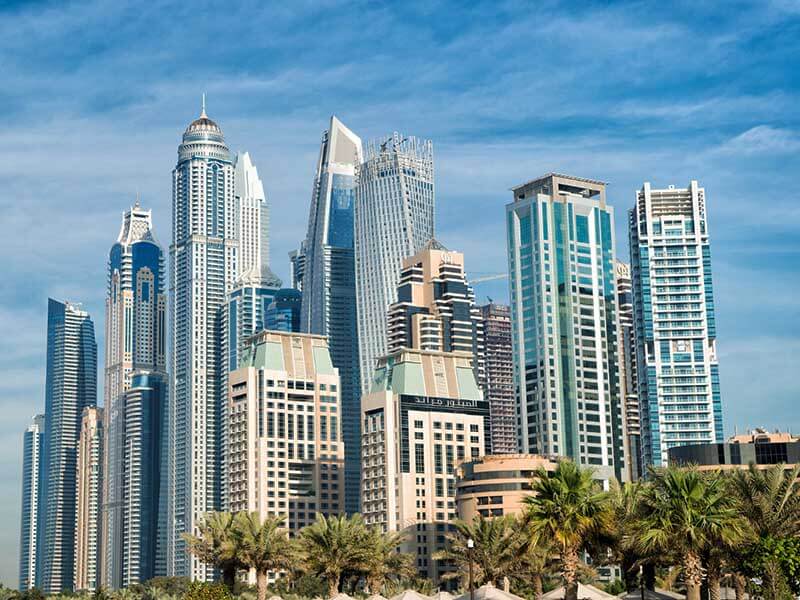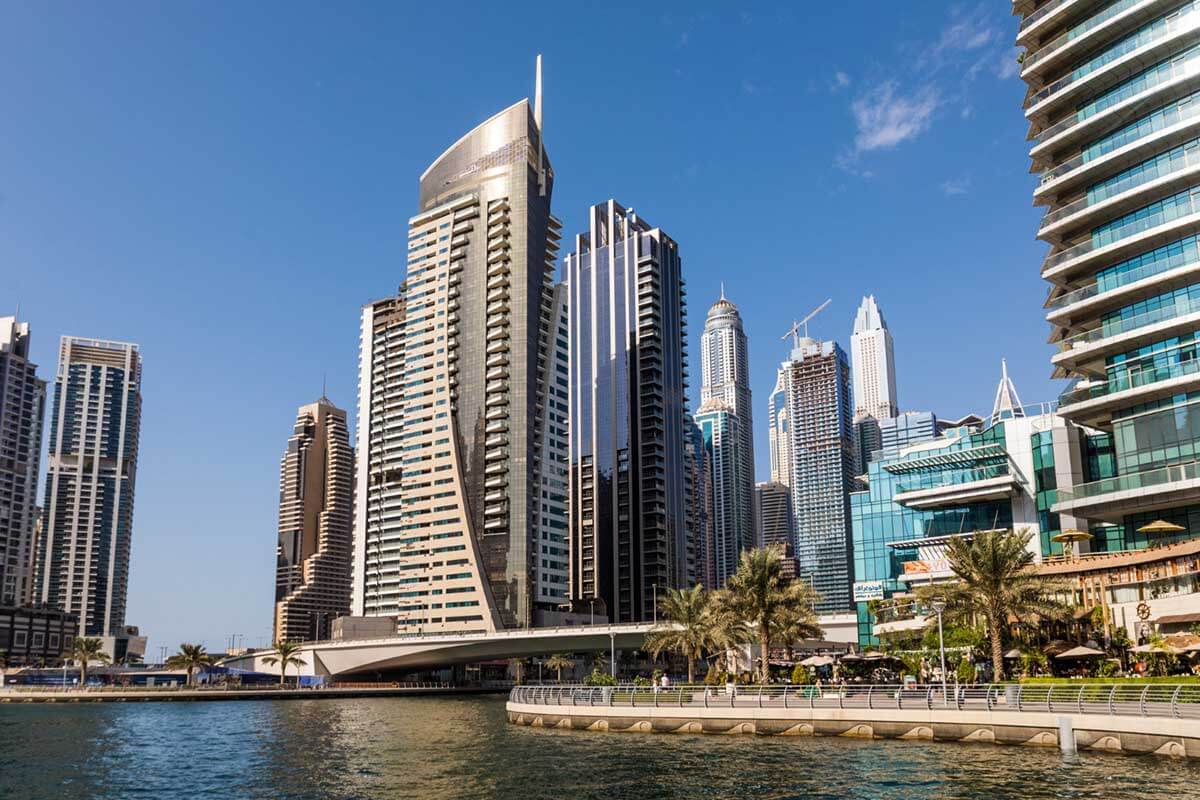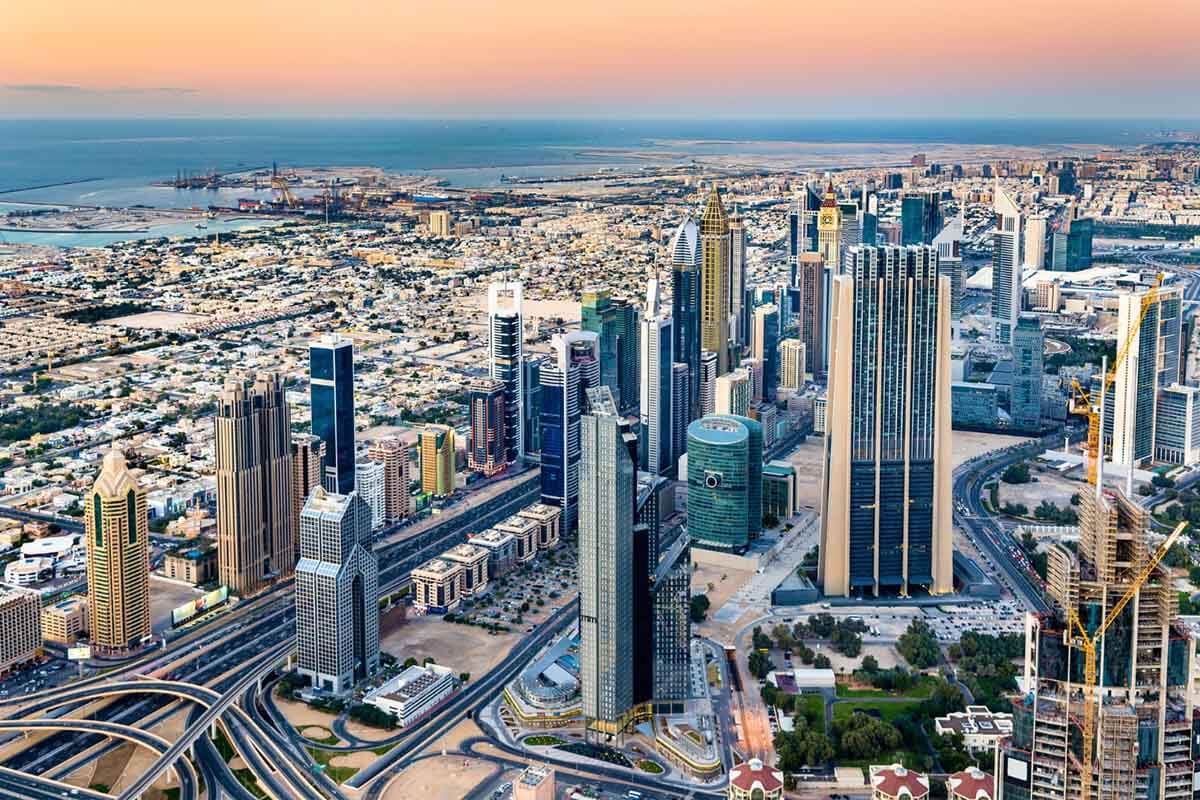
Profitability is a key business term and one of the key concepts when investing and doing business.
In this article, we will look at profitability and its role in investment activity from various points of view. First of all, in real estate investment, and in particular, real estate investment in Dubai.
Content:
- What is profitability, and how is it calculated?
- ROI for real estate is one of the key indicators for an investor
- How do you increase profitability?
- Profitable real estate in Dubai
- Assistance from our specialists
What is profitability, and how is it calculated?
Definition of profitability
Profitability (in English terminology ‒ Rate of Return) is an investment income or loss over a certain time.
Profitability (R) is a percentage (%) calculated as the ratio of net profit (P) over a fixed period to total cost (C) multiplied by 100.
R (%) = P / C * 100. This is the most basic way to calculate.
Investment refers to any contribution of a resource to a particular activity, usually in monetary terms. An investment includes purchase of securities or real estate, and the payment of an employee.
Profit is the positive difference between the funds received and spent from any economic activity. If the profit indicator is negative, it is a loss.
However, it is more important to deal with “cost” to understand profitability.
This concept can be controversial as some economic schools may include different costs and give different meanings to the term.
We will provide the most complete explanation.
The meaning of profitability: value and price, profit and costs
Let’s have a look at the sole production model.
The main concept to be defined is cost. This is the monetary expression of the labor spent on the production of a product.
Both a thing and a service (an activity) are a commodity if they are used in commodity relations.
If a woodcarver makes a toy out of a log and gives it to his child, it has no value, despite the labor spent, as the toy was created for private individual purposes.
But the same toy, made for sale on the market, acquires value because the carver wants to enter into commodity sales.
Commodity relations begin when the producer wants to receive a reward for his goods — compensation for the labor spent in the form of money, goods, or services.
The minimum compensation should cover the costs of physical and moral work. But no one wants to work without receiving money, so the compensation is always higher than the one that covers the work done.
However, cost is a more subjective measurement of the necessary labor compensation. But above all, the cost cannot be determined without a price.
Price is a public expression of value. It is formed both by the desire of manufacturers to receive compensation for the goods and by the desire of buyers to purchase goods by paying this compensation.
Manufacturers compete within the current demand.
High demand enables producers to raise the prices of their goods, and a low demand will reduce them. In this price range, these producers can compete in different ways: by reducing costs, by lowering prices, and by improving production.
What is the profitability calculation for?
Profitability is necessary to assess whether an economic activity is justified.
As pointed out above, profit is the positive difference between what is received and spent on economic activity. A loss is the opposite and would result in a negative difference.
So, we see the following market situation:
- Every toymaker not only tries to become compensated for their labor but also to make a profit, to improve their quality of life, and to expand their production.
- But the goods are not sold at their cost price. They are sold at the price demanded by buyers within the market.
Looking at the situation through profitability, one may conclude that it is measured by the ratio of the value of the product and the price at which it can be sold.
- Are buyers willing to buy a product at a higher price than that spent on its production and distribution? If so, the product makes a profit.
- Are buyers willing to buy a product at a price lower than its cost? If so, the product is unprofitable.
The first option results in a positive difference, and the second in a negative difference. In the latter case, the producer is forced either to stop their activity, or reduce production costs in one way or another.
The cost of production is fixed and calculated based on labor costs. The price is speculative.
How does it work on a large scale?
In reality, most of the market consists not of individual manufacturers but of small, medium, and large firms, corporations, and companies.
The scale changes, but the principle of calculating costs remains the same.
A toymaker can work from home, account only for his work and perhaps the work of those who brought him the materials. Companies pay for workshops, machines, materials, and so on. The products are created by someone's labor, meaning it comes at a price.
Even taxes make up the price they come at.
The word “cost of production” is often used to denote all these costs.
The main thing is that the costs are not one-off. Any business has long-term income and expenses. Therefore, profitability is determined not once, but by periods: monthly, quarterly, and yearly.
Profitability in real estate
The return on investment in real estate is defined in the same way.
You cannot just buy and sell a property, compare the figures, and then it’s done.
The property will now require maintenance, repairs, and regular payments to a management company (e.g., cleaning managers, electricians, etc.). It will also need to be advertised in order to sell or let it.
You must correctly determine the period to be taken into account, account for regular expenses, and compare them with net profit.

ROI for real estate is one of the key indicators for an investor
Having considered some of the key aspects with regard to profitability, we would like to discuss return on investment for real estate in Dubai.
There are several types of profitability (Rate of Return or RoR):
- Nominal Rate of Return (NRoR) — profitability without inflation.
- Real Rate of Return (RRoR) — profitability with inflation.
- Compound annual growth rate (CAGR) — profitability calculation for a longer period of over a year.
-
The Internal Rate of Return (IRR) determines the value of current funds in the future. Will the investment pay off in the future?
For IRR, the "Time Value of Money" (TVM) is used — the concept that the value of money today is always higher than its value in the future, with the same amount.
- Discounted Cash Flow (DCF) measures future money by its current value. It is based on the fact that usually, the value of the same amount of money decreases over time.
Despite these important indicators, ROI is most commonly found in real estate market sources.
Return of Investment (ROI) is the basic and most popular method of measuring your return on investment. It makes it possible to calculate the return on investment when using only the funds received and those spent.
With all of the variety of investments, ROI is a simple way to define the most advantageous spectrum.
To calculate the ROI, it is necessary to deduct the value of the investment (B) from the current value of the investment (A) and to divide the total by the value of the investment (B).
The current value of the investment (A) is the market value of the asset in which the money was previously invested.
The calculation formula is as follows: (A ‒ B) / B = ROI.
When researching the real estate market, including Dubai, you will often come across these formulas: "For the quarter of the year X, Y ROI for the housing category Z was N%."
Usually, a good ROI is considered to be one that ranges from 10-12% or more. Although 5-8% may be high, depending on the situation.
ROI has disadvantages related to its simplicity. It can only be measured by a specific investment for a specific period. It is easy to distort the benefits of investment by focusing on it.
For example, the following situation may happen:
During the year, the ROI for investment A was 20%, and investment B gave an ROI of 60%, but after four years. You might think that option B is more profitable — even if it took longer, it resulted in 3 times the profit!
However, using the RoR variation above and calculating the annual profitability, the second option per year yields only at 15%, and therefore, it is investment A that is a more profitable investment project.
At the same time, we did not consider inflation, nor other costs/ losses specific to the sector.
Subtotal
All the RoR formulas mentioned above are easy to learn, and you would be able to find these online.
We do not recommend creating an investment strategy based on them, as they are only the tip of the iceberg for market analytics. To create a complete picture, it is always best to involve the services of professionals.
Nevertheless, it is possible to identify, by using these tools, the general direction in which to invest.
The important thing is to remember that investment requires careful study, down to the most basic indicators, such as labor costs.
How does profitability increase?
There are two main ways to improve profitability, based on cost and price.
Increasing profitability through cost is associated with either lower costs, or higher returns, with the same resources.
One way to reduce costs may be to reduce the number of your employees and to delegate their tasks to your remaining employees. You may also want to consider a reduction in salaries, or the hiring of cheap labor.
Increasing productivity also involves the technical equipment used. For example, the installation of a water pressure regulator, which will protect pipelines, reduce their wear, and reduce overspending on water on the lower floors of a residential complex.
Increasing profitability through price is speculative. It may depend on marketing, virality, direct market speculation, or other tools that you may have access to.

Profitable real estate in Dubai
In this section, we will discuss the types of Dubai properties and their profitability. Further, we will look at renting and selling properties that are classic earning instruments in the emirate.
ROI from real estate rental and rental yield
To begin with, we will introduce another concept — this is the rental yield (RY). It is similar to ROI but it is narrower.
RY is the difference between rental income, i.e., rent received, and rental maintenance costs.
A reliable calculation method is to measure the annual rental yield (ARY).
The amount of ARY is equal to the rent received for the year, divided by the cost of the property purchased and multiplied by 100. This is measured as a percentage.
For example, if the rental income per year is $40,000, the cost of the property is $300,000, so it is necessary to divide "40,000" by "300,000" and multiply by 100 = 13.33%.
A more accurate calculation will require:
- adding up all the maintenance costs, including repairs, insurance, utilities, and municipal taxes;
- adding up all the income received from the lease. Usually, in Dubai, rent is paid once a month, twice a year, or once a year;
- deduct all costs from total income;
- divide the received costs by the value of the property;
- multiply by 100.
Rental requires long-term planning and regular spending, although the income will not be one-off, but gradual, and not always increasing.
That is why RY is important, which measures the specific rental income of the real estate. But it does not take into account costs such as an investment loan.
ROI is necessary to calculate the overall profitability of an investment, including using a loan.
In most cases, renting in Dubai is a better way to make money by renting apartments or commercial properties to tenants.
A good indicator of RY is 5-8%.
ARY from apartments:
- for one bedroom apartments — an average of 7.5% per annum;
- for two bedroom apartments — about 5.8% per annum;
- for three-bedroom (large real estate) — an average of 5% per annum;
- apartments with four or more bedrooms about 3.2% per annum.
Apartments bring an average of 5% to 8% RY per month.
The last category of apartments is large and expensive real estate, which is usually preferred to buy rather than rent. They, like villas, also sometimes rent out, but they are not considered effective to earn money on them.
Villas bring a monthly RY of about 3-4%.
In general, the RY in Dubai is about 5-9%. Which are enormous figures. For example, in London, it is 2.9%, and in Hong Kong, it is 2.3%.
But commercial real estate stands apart. Today, such properties of Dubai are toxic assets. The market has no interest in them because their purchase is always unprofitable.
You should then turn to analytics.
The Knight Frank International consulting agency publishes a report on the Dubai real estate market twice a year. The latter, in the summer of 2021, showed that the demand for commercial real estate rental was either 0.0% or negative.
Rare areas showed growth, for example, in Greens (6.1%). Most often, companies from the technological sector rent in commercial areas, usually for servers.
EXPO 2020 will contribute to the growth of rental and RY from commercial real estate, but there is no convincing data to draw confident conclusions.
According to Asteco, one of Dubai’s leading management companies, rental rates, as well as RY, may soon start to decline due to the imminent arrival of more than 9,000 new properties on the market.
According to Asteco, one of the leading management companies in Dubai, rental rates, as well as RY, may soon begin to decline due to over 9,000 new properties on the market.
The key word is "may".
According to ZAWYA, as of November 2021, the ROI of rented real estate is about 5-7%. This is not the ideal "from 12%", but a large percentage with the high RY.
Apartments:
- International City is the leader in ROI among affordable priced real estate.
- Dubai Marina is part of the elite real estate.
Villas:
- Jumeirah Village Circle is the leader in the affordable segments.
- Palm Jumeirah is the leader in the elite segments.
ROI from the sale of real estate
Income from the sale of real estate is based on several housing categories:
- apartments;
- houses — villas and townhouses;
- large penthouse apartments;
- real estate under construction (off-plan) and new buildings.
The average ROI in Dubai ranges from 7 to 9%.
In the first half of the year, the ROI was:
- for affordable priced segment apartments - from 6 to 7%, sometimes reaching 9-10%;
- for premium apartments - from 3 to 6%;
- houses in the affordable segment have about 5%;
- premium sector houses - from 4 to 5%.
In general, off-plan real estate has a higher ROI than other types as the cost of this type of property increases during this construction.
The apartment project in a residential complex is cheaper than apartments in an already built one. Off-plan real estate is popular in Dubai. High demand increases the price, making it possible to resell the property for more. ROI of 9-12% is a real bar.
At the moment, it is difficult to find precise information on ROI for the second half of 2021 because:
- The period is not over, and the data of the third quarter alone cannot offer the definitive picture.
- EXPO-2020, launched in October, boosted the market and led to a boom in local property prices and sales.
The second half of 2021 was productive for many years, so the exact data will be available only in early 2022. However, the ROI for residential real estate is increasing.

The assistance of our specialists
Market analysis is a rather complex and time-consuming task.
Emirates.Estate specialists offer assistance with choosing a property in Dubai according to your preferences and personal income strategy.
You will receive consulting services, legal assistance, advice on the choice of real estate, as well as prepare all the necessary documents.







































